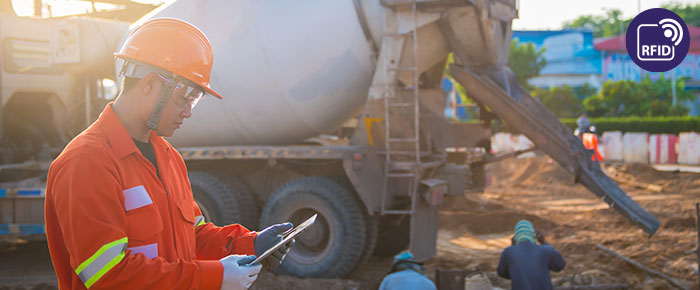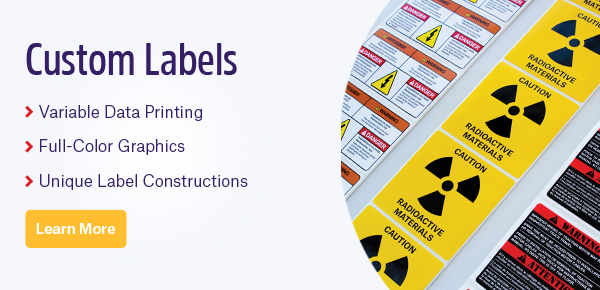 Radio-frequency identification (RFID) isn’t a new technology, but within the last several years, it’s begun to take over the industrial landscape, with benefits that often surpass the traditional use of barcodes. RFID consists of a transponder, usually rewritable chips that passively or actively send out signals, all of which can be simultaneously read by one scanner/reader without a direct line-of-sight. Of the various industrial sectors, from aerospace to agriculture, the construction industry has become one of the most reliant on RFID, utilizing the technology in a variety of different ways.
Radio-frequency identification (RFID) isn’t a new technology, but within the last several years, it’s begun to take over the industrial landscape, with benefits that often surpass the traditional use of barcodes. RFID consists of a transponder, usually rewritable chips that passively or actively send out signals, all of which can be simultaneously read by one scanner/reader without a direct line-of-sight. Of the various industrial sectors, from aerospace to agriculture, the construction industry has become one of the most reliant on RFID, utilizing the technology in a variety of different ways.
Equipment and tools
Nothing is more important in the construction industry than having the right set of tools for the job. However, for large companies, keeping track of tools may require a specialized solution that can efficiently manage their use and protect against theft. RFID-based systems can handle every step:
- A digital inventory of tools and their locations can be linked to data-encoded RFID tags or labels, which are physically placed on each tool
- Personnel who wish to check out a tool can scan its RFID tag or label (even with their phone), notifying the database that the tool is out at a specific construction site
- The on-site presence of tools can be verified by scanning them all simultaneously with one scanner within a given range
- Once the tool is deposited back at the warehouse, the tag can be scanned once more, indicating that it is no longer in use
This kind of system prevents theft, ensuring that all tools are accounted for, no matter the location. It also helps manage their use, so personnel can remotely monitor the number and identity of the available tools. The database can even take stock of the tool’s history, including when it was purchased and/or last inspected and who used it prior. This kind of system is especially useful for companies that house tools in multiple different locations or in areas that make it difficult to identify each item, like a laydown yard, where they can get covered in mud or snow.
Inventory management
Inventory represents a constantly revolving door of pieces of all shapes and sizes that must be monitored continuously. Similar to your tools, RFID can support inventory management in many of the same ways: by creating a database and scanning tags or labels, you can get a complete overview of your stock, with real-time fluctuations for the pieces that are in transit to a site, whether clients have paid for them, and where in the workflow they reside.
Where barcode labels used to be the standard for identifying construction materials, RFID now represents the more adaptable system. Besides the primary advantage of scanning an entire inventory simultaneously without direct line-of-sight, labels with inlays for RFID chips also allow both sets of technology to be combined. This means you can still print barcodes on the facestock of these RFID labels, which serve as a backup to the RFID-encoded information. Certain manufacturers, like IndustriTAG, can also generate inlays for RFID on nearly any type of label. This is especially important for construction materials, which may require weather- and abrasion-resistant labels.
Safety and personnel
Worker safety is a high priority for all construction sites, and what better way to monitor potential dangers than with RFID. Active RFID systems placed at the periphery of potential hazards can create barriers that immediately alert personnel to these dangers. It can also be used to create barriers that monitor workers’ identity at the site, including registering which contractors have employees on site, whether that personnel has the necessary training or certification required to be there, as well as the number of workers present.
When it comes to OSHA and ANSI requirements, RFID can be used to monitor fall protection and other safety systems at the worksite. It can quickly register all pertinent information about these systems—manufacturer, distributor, inspection date, location, and usage—making it easy to provide the appropriate information to all the necessary regulatory agencies.
RFID also makes timecards a thing of the past. Punching into a construction site can be automated with RFID; wearing a hard hat equipped with an RFID tag means each worker can be accounted for right as they enter the site. This avoids confusion later, especially with workers who frequently forget to punch in.
Maintenance and inspection
Maintenance logs can also be kept in an RFID-based database. Accessing information without the need for direct line-of-sight is especially useful for building parts that are underground and located in other hard-to-reach places, like sewer pipes, telecom cables, and electrical wiring. RFID tags or labels can be scanned without formally accessing the part to determine whether they require upkeep, with less time spent and no additional costs.
What’s mentioned above is only a handful of the ways that RFID can be integrated into the construction sector. It’s clear that with cheaper and more adaptable RFID solutions, including the possibility of incorporating RFID chips into any type of tag or label, this technology can dramatically enhance efficiency, and ultimately, reduce the costs associated with all facets of the construction industry, from inventory and personnel to safety and maintenance.

